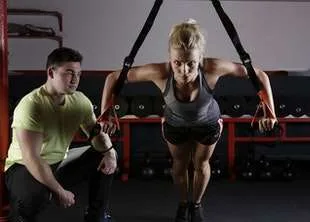Personal Trainer Professional Practices: Knowing how to train the body for improved performance is one thing; but making a successful career or business out of personal training is another thing altogether. The purpose of personal training is to focus on prevention of health issues and also enhancing health and fitness for individuals, who are able to exercise.
Where Do Personal Trainers Work?
An individual may decide to hire a personal trainer due to
- a health threat
- health condition
- lack of knowledge about how to get fit and healthy
- a wish to adhere to a personal training program
- the need for motivation
You will Learn:
- Explain the role of the personal trainer.
- Explain the qualities required by a personal trainer.
- Recommend broad areas of focus that a client should attend to in order to improve their training outcomes.
- Investigate ways to expand a personal training service.
- Explain how to introduce yourself as a personal trainer and start working with new clients.
- Develop fitness plans and programs according to the needs of clients.
- Explain how to manage client departures and terminate difficult clients.
Detailed Course Outline
This course is made up a number of lessons or units. Each of these has self assessment questions, a set task (practical homework) and an assignment which you can upload online.
There are 7 lessons in this course:
1. Role of a personal trainer
-
- Personal training professionals
- Purpose of personal training
- Medical approval for exercise
- Barriers to exercise
- Major benefits of personal training
- Daily work and responsibilities of personal trainers
2. Qualities of a personal trainer
-
- Desirable character traits of the personal trainer
- Core services on offer
- A personal trainer and their role in motivation
- Level of concern or tension (good stress)
- Success
- Knowledge of results
- Education or training the professionals
3. What you need to know – expertise for success
-
- Basic components of physical fitness
- The human body
- Energy production
- Energy and exercise
- Considerations for effective business
4. Expanding a personal training service
-
- Common types of personal trainers
- Business basics
- Expanding your services into other areas
- Specialized services
5. Working with new clients
-
- Working with new clients – meet and greet
- Pre-screening
- Anthropometric measurements
- Summarize what you know about the client
6. Working with clients to create fitness plans and programs
-
- Taking baseline measures & assessing progress
- The role of exercise in weight control
- Calculating ideal body weight
- Human movement & types of fitness programs
- Working with older adults
- Instructing young people
- Over-exercising
- Other exercise considerations
7. Managing client departures
-
- Ending the trainer-client relationship
- Difficult clients
- Ending the relationship
- Finding new clients
When you have completed the lessons of your Certificate course, you will be given the option of taking the optional exam. It’s okay if you don’t want the exam, we still issue your Careerline Certificate. For Advanced Certificates however, the exam is compulsory (per module) and are included in the course fee.

